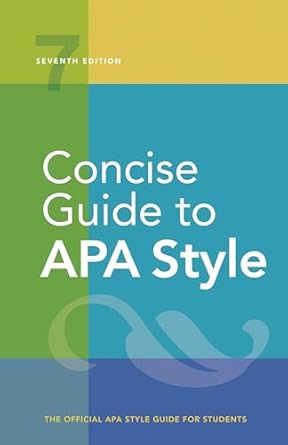[toc]
mastering abbreviations a style guide excerpt
Concise Guide to APA Style: 7th Edition (OFFICIAL)
Page 136 Review
Understanding Abbreviations: A Comprehensive Guide
This excerpt provides a detailed guide on the correct usage and formatting of abbreviations, crucial for maintaining clarity and consistency in writing.
Let’s delve into the key aspects covered in this section.
Defining Abbreviations in Text
The text emphasizes the importance of defining abbreviations upon their first use within the main body of the document. “When you first use a term that you want to abbreviate in the text, present both the full version of the term and the abbreviation.” This ensures that readers are immediately aware of what the abbreviation stands for, minimizing confusion.
The excerpt makes an important distinction concerning headings. “When the full version of a term appears for the first time in a heading, do not define the abbreviation in the heading; instead, define the abbreviation when the full version next appears.” This avoids cluttering headings with parenthetical definitions and maintains a cleaner, more professional appearance.
Furthermore, “Use abbreviations in headings only if the abbreviations have been previously defined in the text or if they are listed as terms in the dictionary.” This rule reinforces the principle of ensuring readers are familiar with the abbreviation before encountering it in a heading.
The placement of abbreviations is also meticulously defined. “When the full version of a term first appears in a sentence in the text, place the abbreviation in parentheses after it.” For example: attention-deficit/hyperactivity disorder (ADHD).
A slightly different rule applies to parenthetical text. “When the full version of a term first appears in parenthetical text, place the abbreviation in square brackets after it.
Do not use nested parentheses.” Thus: (i.e., attention-deficit/hyperactivity disorder [ADHD]).
The use of square brackets avoids the confusion of nested parentheses, improving readability.
The inclusion of citations alongside abbreviations is also addressed. “If a citation accompanies an abbreviation, include the citation after the abbreviation, separated with a semicolon.
Do not use nested or back-to-back parentheses.” Examples are provided to illustrate the correct formatting: Beck Depression Inventory-II (BDI-Il; Beck et al., 1996).
The incorrect version is also mentioned: (Beck Depression Inventory-II [BDI-Il]; Beck et al., 1996).
Abbreviations in Tables and Figures
The guide provides specific instructions for defining abbreviations within tables and figures. “Define abbreviations used in tables and figures within each table and figure, even if the abbreviations have already been defined in the text.” This ensures that each table and figure is self-contained and understandable, regardless of whether the reader has previously encountered the abbreviation in the main text.
The excerpt offers flexibility in how abbreviations are defined in tables and figures. “The abbreviation can appear in parentheses after first use of the term within the table or figure, including in the table or figure title, or the definition can appear in a table or figure general note or a figure legend.” This allows authors to choose the most appropriate method for their specific context.
Consistency is key: “If an abbreviation is used in multiple tables and figures, define it in each table or figure.” This reinforces the principle of self-containment.
Conversely, “Do not define abbreviations that do not appear in a table or figure.” This avoids unnecessary clutter and keeps the definitions relevant.
Finally, the text clarifies that “Do not define or write out standard abbreviations for units of measurement and statistics in a table or figure (see Sections 6.10 and 7.15).” Commonly understood abbreviations do not require definition.
Formatting Abbreviations: Plural Forms
The excerpt briefly touches upon the formation of plural abbreviations: “To form the plural of most abbreviations and statistical symbols, add a lowercase “s” alone, without an apostrophe.” This is a straightforward rule that helps maintain consistency in writing.
In summary, this excerpt provides clear and concise guidelines for using and formatting abbreviations in academic and professional writing.
Following these guidelines ensures clarity, consistency, and professionalism in written communication.
Buy full ebook for only $18: https://www.lulu.com/shop/american-psychological-association/concise-guide-to-apa-style-7th-edition-official/ebook/product-rmzpq54.html?page=1&pageSize=4

